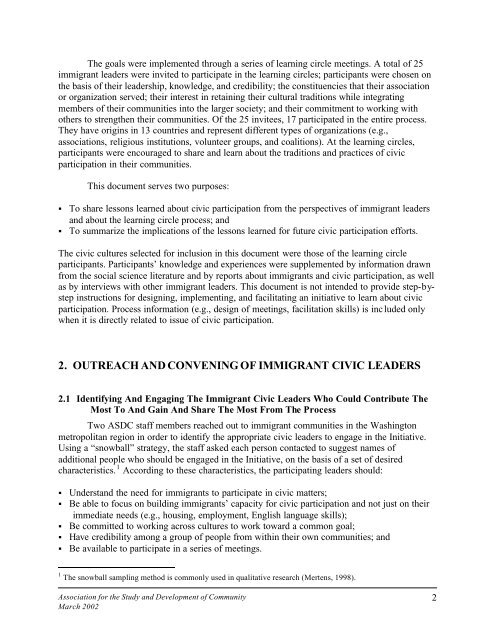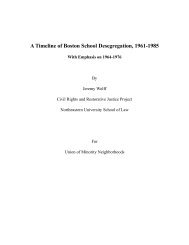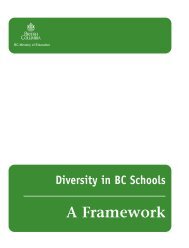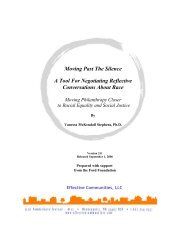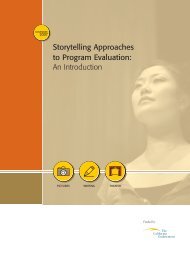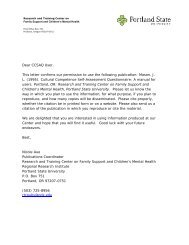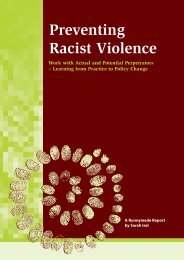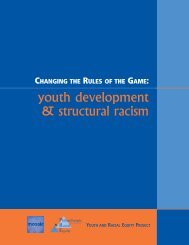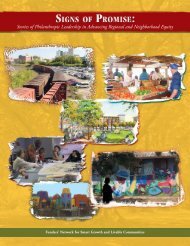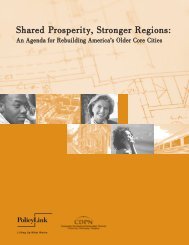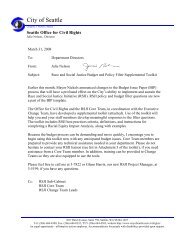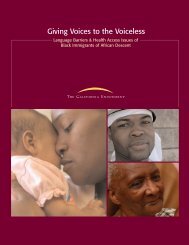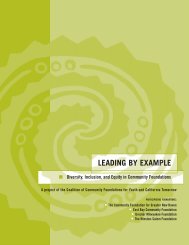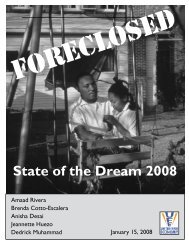lessons learned about civic participation among immigrants
lessons learned about civic participation among immigrants
lessons learned about civic participation among immigrants
Create successful ePaper yourself
Turn your PDF publications into a flip-book with our unique Google optimized e-Paper software.
The goals were implemented through a series of learning circle meetings. A total of 25immigrant leaders were invited to participate in the learning circles; participants were chosen onthe basis of their leadership, knowledge, and credibility; the constituencies that their associationor organization served; their interest in retaining their cultural traditions while integratingmembers of their communities into the larger society; and their commitment to working withothers to strengthen their communities. Of the 25 invitees, 17 participated in the entire process.They have origins in 13 countries and represent different types of organizations (e.g.,associations, religious institutions, volunteer groups, and coalitions). At the learning circles,participants were encouraged to share and learn <strong>about</strong> the traditions and practices of <strong>civic</strong><strong>participation</strong> in their communities.This document serves two purposes:• To share <strong>lessons</strong> <strong>learned</strong> <strong>about</strong> <strong>civic</strong> <strong>participation</strong> from the perspectives of immigrant leadersand <strong>about</strong> the learning circle process; and• To summarize the implications of the <strong>lessons</strong> <strong>learned</strong> for future <strong>civic</strong> <strong>participation</strong> efforts.The <strong>civic</strong> cultures selected for inclusion in this document were those of the learning circleparticipants. Participants’ knowledge and experiences were supplemented by information drawnfrom the social science literature and by reports <strong>about</strong> <strong>immigrants</strong> and <strong>civic</strong> <strong>participation</strong>, as wellas by interviews with other immigrant leaders. This document is not intended to provide step-bystepinstructions for designing, implementing, and facilitating an initiative to learn <strong>about</strong> <strong>civic</strong><strong>participation</strong>. Process information (e.g., design of meetings, facilitation skills) is included onlywhen it is directly related to issue of <strong>civic</strong> <strong>participation</strong>.2. OUTREACH AND CONVENING OF IMMIGRANT CIVIC LEADERS2.1 Identifying And Engaging The Immigrant Civic Leaders Who Could Contribute TheMost To And Gain And Share The Most From The ProcessTwo ASDC staff members reached out to immigrant communities in the Washingtonmetropolitan region in order to identify the appropriate <strong>civic</strong> leaders to engage in the Initiative.Using a “snowball” strategy, the staff asked each person contacted to suggest names ofadditional people who should be engaged in the Initiative, on the basis of a set of desiredcharacteristics. 1 According to these characteristics, the participating leaders should:• Understand the need for <strong>immigrants</strong> to participate in <strong>civic</strong> matters;• Be able to focus on building <strong>immigrants</strong>’ capacity for <strong>civic</strong> <strong>participation</strong> and not just on theirimmediate needs (e.g., housing, employment, English language skills);• Be committed to working across cultures to work toward a common goal;• Have credibility <strong>among</strong> a group of people from within their own communities; and• Be available to participate in a series of meetings.1 The snowball sampling method is commonly used in qualitative research (Mertens, 1998).Association for the Study and Development of CommunityMarch 20022


